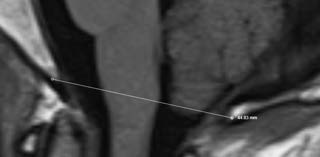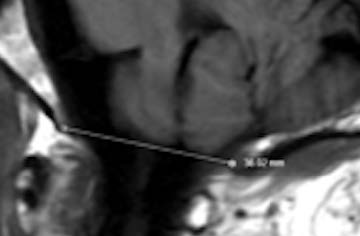When our patient Diane first came to our office, she was experiencing a range of troubling neurological symptoms: p ersistent headaches, balance issues, eye-tracking difficulties, and an overall sense of malaise. After a comprehensive evaluation and reference to MRI imaging, we learned that Diane had a history of Chiari malformation—a structural condition present at birth that occurs when the lower part of the brain (the cerebellum) extends into the spinal canal.
Traditionally, the only established treatment for Chiari malformation has been surgical decompression, where part of the skull bone is removed to create more space for the cerebellum. But Diane’s case opened a door to the innovative, non-surgical alternative of regenerative medicine.
What is Chiari Malformation?
Chiari malformation is a rare but serious neurological condition in which the skull is too small or misshapen, forcing part of the cerebellum downward into the spinal canal. This can compress the brain stem, disrupt normal flow of spinal fluid, and create debilitating symptoms like:
● Headaches
● Neck pain
● Balance and coordination issues
● Visual disturbances
● Dizziness or fainting
Chiari Malformation & Ehlers-Danlos Syndrome (EDS)
Chiari malformation is especially common in patients with connective tissue disorders such as Ehlers-Danlos Syndrome (EDS). These patients have an increased risk of Chiari malformation because of connective tissue weakness caused by EDS, which can lead to craniocervical instability (CCI). The instability at the craniocervical junction can lead to the downward displacement of the cerebral tonsils, the hallmark of Chiari malformation type I. The key points to understanding the connection between these conditions include:
● Co-occurrence: Chiari malformation is a recognized neurological complication that frequently occurs alongside EDS.
● Worsening symptoms: Underlying instability can exacerbate Chiari symptoms, or the ligament instability itself can mimic the symptoms of Chiari malformation.
● Diagnostic importance: A diagnosis of EDS often prompts further imaging to check for issues like CCI. LINK TO
How Regenerative Medicine Plays a Role
During Diane’s examination, we identified an instability in her upper cervical spine in addition to her Chiari malformation, which was adding pressure to her brain stem and thus intensifying her symptoms. Rather than relying on invasive surgery, we opted for a regenerative approach to restore the integrity of the joints and ligaments at the craniocervical junction. We used a
combination of prolotherapy, platelet-rich plasma (PRP) and VSEL stem cells in her upper cervical spine and craniocervical junction. Over time, this treatment helped stabilize the area and reduce the strain on Diane’s brain stem.
The Results: From Grade 1 to Grade 0
The transformational results of Dr. Greenberg’s regenerative procedures are evident in Diane’s MRI scans themselves. Repeat imaging shows the improvement of her Chiari malformation from Grade 1 to Grade 0, indicating that the cerebral tonsils had shifted back up to normal position.

In this brain scan, we can see Diane’s grade 1 Chiari malformation. This is evident through the extension of the cerebral tonsil below the end of the skull, compressing the brain stem.

This scan was taken approximately six months after Diane’s treatment. The cerebral tonsil is now above the radiographic line that comes from the base of the skull, creating less compression on the brain stem.
The Future of Treatment for Chiari Malformation
Diane’s case illustrates how regenerative procedures like prolotherapy, PRP and VSELs can provide a non-surgical, tissue-restoring option for rare neurological conditions like Chiari malformation. By focusing on structural stability, regenerative therapies can reduce pressure on critical areas of the brain and help to alleviate pain. While more research is needed to fully understand the scope of regenerative medicine’s role in treating Chiari malformation, Diane’s case shows promising potential for a patient-centered, minimally invasive approach.
The innovative, expert care offered at Greenberg Regenerative Medicine highlights the future of healing—offering new hope to patients with rare, difficult-to-treat conditions. Are you or a loved one struggling with neurological-related symptoms, and have found little success in finding relief from traditional medicine? Schedule a consultation with Dr. Greenberg to help get you results just like Diane’s.



